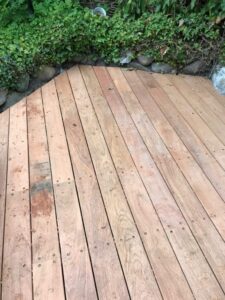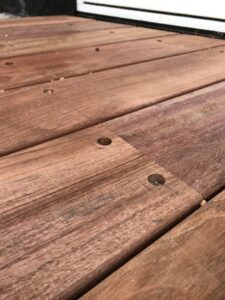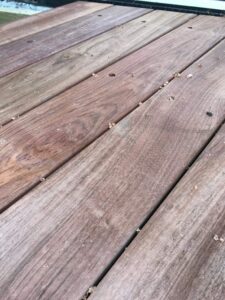Do you dream of a terrace made of sustainable wood?
The sun is out and we get many inquiries about terraces. I guess this is what you can call seasonal work and they are fun to do even though it is hard work, as everything takes place down on the ground. It’s hard on the back and knees. You can clearly feel it in your body after a day’s work. Good knee pads and a bit of stretching and bending will get you through the day, so keep that in mind if you embark on a do-it-yourself project. In addition, it is good to have tempered glass on your mobile when you are doing DIY projects of this size.

Choosing the type of wood for your terrace
Today, terraces are made from many different materials. The typical Danish types of wood are oak, pine, spruce and larch. The material is often chosen based on how people want to decorate the terrace and/or how the wood needs to be maintained. Many people choose to make their terrace in hardwood, as these are strong boards that can withstand a lot – but it is also a much more expensive terrace to have made. The typical hardwood species are ipé, jatoba, mahogany and teak. These are all exotic woods. They have all the properties that they are super nice, have a longer shelf life and over time they get a super nice grayish sheen if they are not treated. The “new” is composite wood. Composite consists of a mixture of wood (60%), recycled plastic (30%), binder (10%) and dye. The composite is easy to install, maintenance-free and environmentally friendly. It is a matter of taste and often economics that determines what you choose. For example, the jatoba (shown in the pictures) costs approx. NOK 1,500 per m2 incl. delivery and installation, which is cheap in the hardwood category – but still an expensive choice of material. At Focus Plus, we prefer to use FSC-certified wood, as it means sustainable deforestation and the protection of flora and fauna.

The work process
The procedure is often the same when making a terrace. Sometimes the pile drill must be advanced, other times you build a skeleton on existing tiles – it is very different what the starting point is. You start with a weed cloth, then you build a skeleton, typically in pressure-treated wood (preferably the NTR brand, it is the best quality and the most environmentally friendly wood). Then you lay the terrace boards and they are typically screwed in with stainless screws. Some are made with visible screws, and other times the screws are countersunk and plugged. The latter clearly gives the nicest end result, but is also the most expensive solution.

You are welcome to contact us if you have further questions about material selection, prices or want to talk about the possibilities of getting your own terrace.


